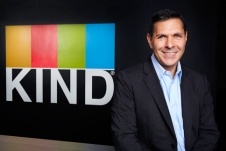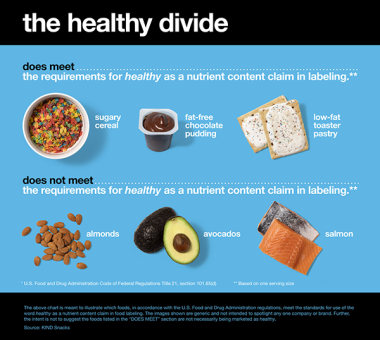At the Center on Global Brand Leadership, we were delighted to host our 8th annual BRITE conference this March. BRITE ’15 continued our aim to present a range of diverse content, with sessions that ran from the marketing insights and initiatives of Doritos to a discussion of whether the future of artificial intelligence and robotics will help or hinder humanity.
One clear theme that ran through a several sessions this year was the influence data will have on brand building and business development. The hype cycle around the specific phrase “big data” has waned, because companies are now driven by how to effectively extract value from, and avoid the dangers inherent in, collecting and connecting massive amounts of data.
Data for Insights and Surprising Customers
 Ann Mukherjee, President of PepsiCo Global Insights, kicked off the conference by noting, “We have to take consumer expectations for unpredictable marketing and make it predictable.” Mukherjee discussed the Doritos brand, and how PepsiCo used consumer data to uncover that the Doritos fan was ‘young and hungry’ – hungry for everything, not just a snack. “They want to be challenged because as they get challenged they think about how they challenge themselves.”
Ann Mukherjee, President of PepsiCo Global Insights, kicked off the conference by noting, “We have to take consumer expectations for unpredictable marketing and make it predictable.” Mukherjee discussed the Doritos brand, and how PepsiCo used consumer data to uncover that the Doritos fan was ‘young and hungry’ – hungry for everything, not just a snack. “They want to be challenged because as they get challenged they think about how they challenge themselves.”
When it comes to developing loyalty, the Doritos target audience is no picnic. “Young snackers are promiscuous,” Mukherjee stated, “They’ll eat cardboard if it tastes good.” Given these dual insights, her challenge was to build something surprising, exciting, and most importantly scalable. At last year’s SxSW, her team did this by inviting the world to take part in its Doritos concert event, permitting fans to watch online and literally take control of the event by choosing lighting effects, songs that should be played, and what order artists should perform.
This ‘young and hungry’ insight also helped the brand redirect some of its marketing spend away from large TV spots. Instead, it looked for alternate opportunities to reach these young and hungry consumers, like partnering with the videogame Call of Duty and creating Taco Bell’s Doritos Locos Tacos. These tacos created so much buzz in limited release that six new manufacturing plants had to be built to meet the expected demand of the nationwide launch which spurred a 13% same-store sales increase in Q2 2012.
Meaningful Relationships
Martin Hayward, Senior Vice President of Global Digital Strategy and Futures at Aimia, stated in our joint keynote that Aimia hopes to help create a “utopian” future in which personal data access and permission controls are used, “to develop ‘real relationships,’ which is where the trust between consumers and companies is such that they happily share data because they know that data will be used to reward them and build long-term relationships for mutual benefit.”

From the first teases of data coming out of a new research effort between our Brand Center and Aimia, we see evidence that consumers are right now suspect of companies creating this utopian future, but they are also hoping for it. We looked at six industry categories and found that consumers don’t report much comfort in how companies handle their personal data, with all but financial services below a 50% comfort level. But, when asked about all kinds of specific data items – name, email, website history, social network access, etc. – roughly 80% of our respondents were more willing to share all of these pieces of information with a brand when they trusted it.
The goal of developing these meaningful relationships was echoed among a wide range of companies at BRITE ’15:
- The start-up Billguard now has a million people voluntarily sharing access to their financial accounts because they collectively crowdsource fraudulent activities and save each other money. Founder and CEO Yaron Samid stated that Billguard is built as a trust brand and thus it is very careful about how to use all this data and work constantly with their community to uncover what additional offers or opportunities are viewed as truly added value.
- At The Metropolitan Museum of Art, against the Chief Digital Officer’s better judgment, a decision was made to require visitors to submit their email when connecting to the museum’s free Wi-Fi. Within a few months, however, over 100,000 valid new email addresses had entered the museum’s database. As CDO Sree Sreenivasan told the BRITE audience, “What is the lesson there, that your CDO may not know anything he is talking about… but more importantly, be open-minded with any new idea.” If you provide true value to people, they are often happy to give up some information in exchange.
- Chris Wiggins, Chief Data Officer at The New York Times, noted that he spends less time looking at online article clicks since the paper aims to generate trusted and loyal consumers that want to support the magazine with a subscription, rather than just gather eyeballs that the company can sell advertising against.
Of course, one of the keys to building these meaningful relationships, and connecting data to provide more targeted or personalized consumer experiences, is knowing where to draw the line. As Mike Weaver, Director of Data Strategy & Precision Marketing at Coca-Cola, stated, “If I say, I know you like music and let me relate my brand to your passion, so far we think that is ok. But if I say, I know you love Taylor Swift’s new album and especially the third track on that album, then you are going to get a little creeped out and we don’t want to get anywhere near that.”
Lots of Data Won’t Be Personal
At BRITE we also noted that large swaths of the new data deluge are going to be collected not directly from people, but by devices around the world that are joining the Internet of Things. By 2050, estimates are that anywhere from 30 to 75 billion devices will be connected to the internet.
The hype around the Internet of Things is often connected to devices used by everyday consumers. And at BRITE ’15 we had the pleasure of hearing Billie Whitehouse, Founder and CEO of Wearable Experiments, talk about her company’s efforts to entwine articles of fashion with the internet. This ran from the practical – Navigate, a GPS jacket that gathers data to help guide you through major cities [video] — to the, shall we say, more entertaining side of things – Fundawear, for which you’ll just have to watch the clip [video].
But beyond this hype, the reality is that just as many, if not more, of these connected devices will be part of the industrial economy – think of areas such as transportation, city planning, and manufacturing. In a new research collaboration that David Rogers and I are conducting with SAP, we find that for most firms, the top priority in implementing an Internet of Things initiative is gaining efficiencies and cost savings, with revenue as a secondary objective.
We also found that depending on the firm’s core business case – cost savings vs. revenue – the value firms sought to extract from data collection was different. Increasing the visibility of operations or improving customer service and decision-making rose to the top in firms driven by cost-savings, while revenue-focused firms were driven by opportunities to provide more customized products and services, gather greater customer insight, and create new business models.
But for each of these companies, the top barriers in developing these initiatives were the same – data privacy and security threats. Everyone is aware that these connected devices have the potential for great benefit, but attention to the privacy and security of the data they collect is paramount to their long term success.
Conclusion
As Martin Hayward told the BRITE audience, in many markets and categories the current use of data sadly leans more towards ‘offer anarchy,’ with companies seeking only to reach more and more consumers with purely transactional deal-based opportunities, all aimed at short-term immediate sales. Our data future will hopefully be more utopian, and not draconian, if companies and their stakeholders are able to build mutual trust and a rewarding value exchange.
How are you treating your data and building your relationship with stakeholders?
BY MATTHEW QUINT








 Ann Mukherjee, President of PepsiCo Global Insights, kicked off the conference by noting, “We have to take consumer expectations for unpredictable marketing and make it predictable.” Mukherjee discussed the Doritos brand, and how PepsiCo used consumer data to uncover that the Doritos fan was ‘young and hungry’ – hungry for everything, not just a snack. “They want to be challenged because as they get challenged they think about how they challenge themselves.”
Ann Mukherjee, President of PepsiCo Global Insights, kicked off the conference by noting, “We have to take consumer expectations for unpredictable marketing and make it predictable.” Mukherjee discussed the Doritos brand, and how PepsiCo used consumer data to uncover that the Doritos fan was ‘young and hungry’ – hungry for everything, not just a snack. “They want to be challenged because as they get challenged they think about how they challenge themselves.”
